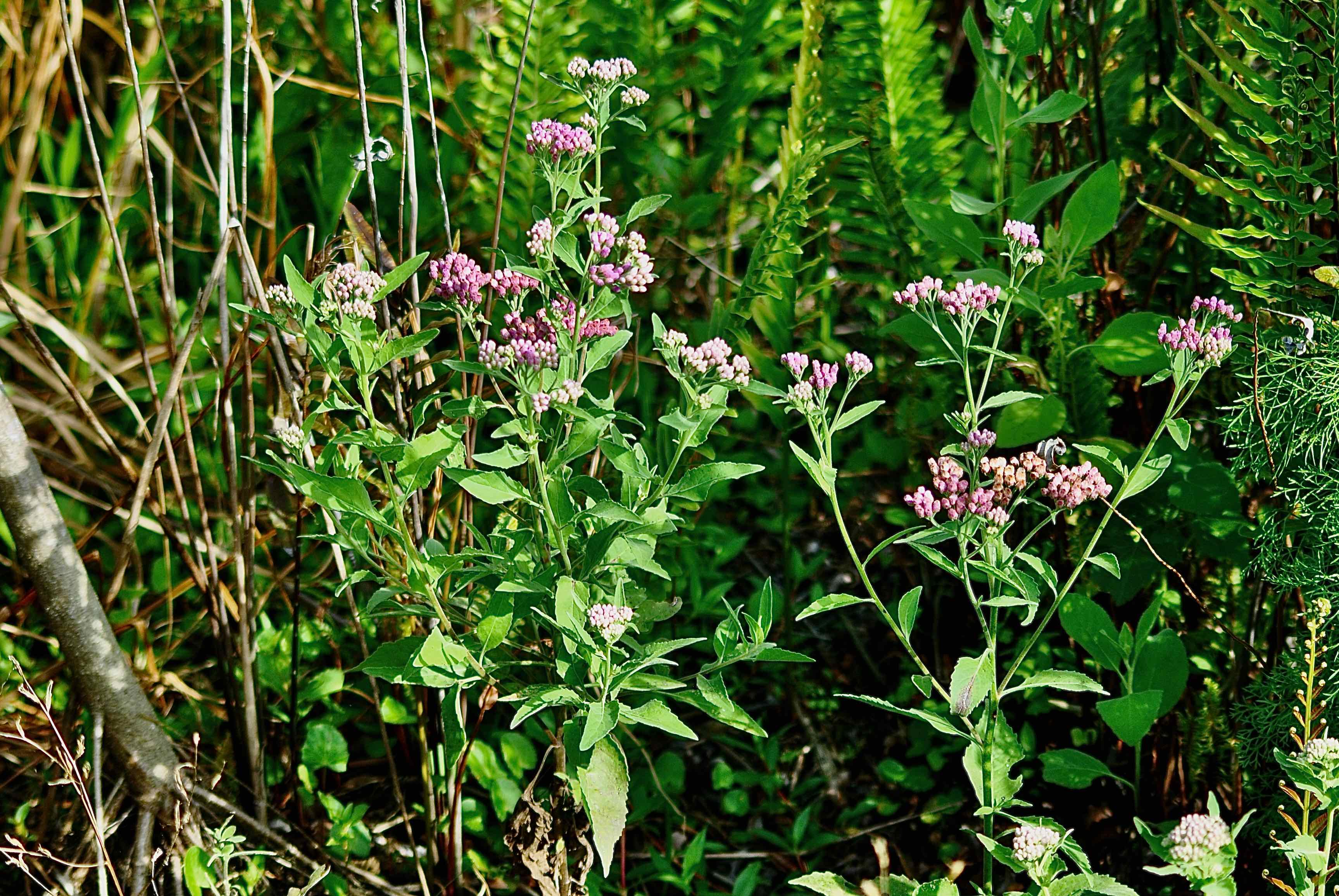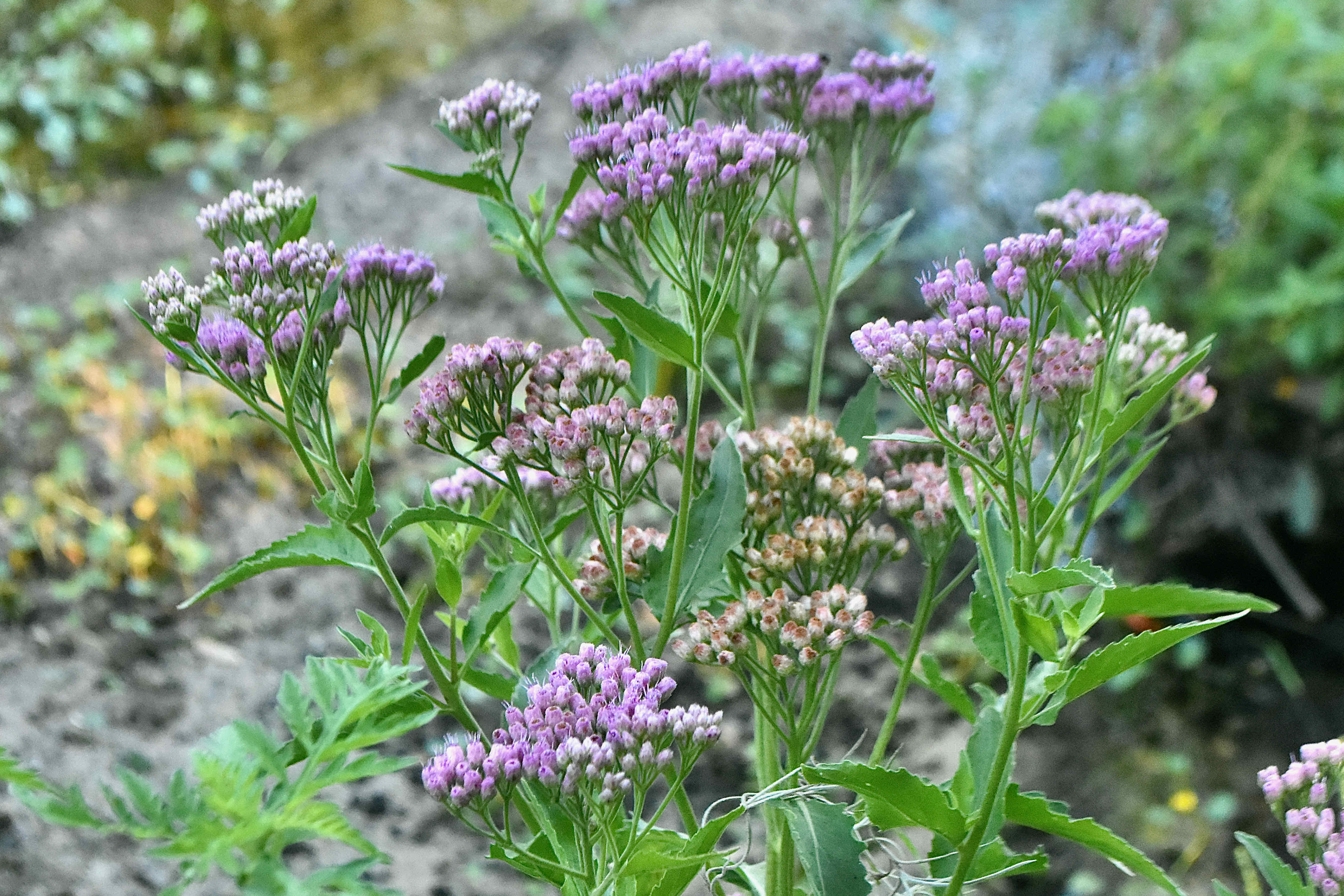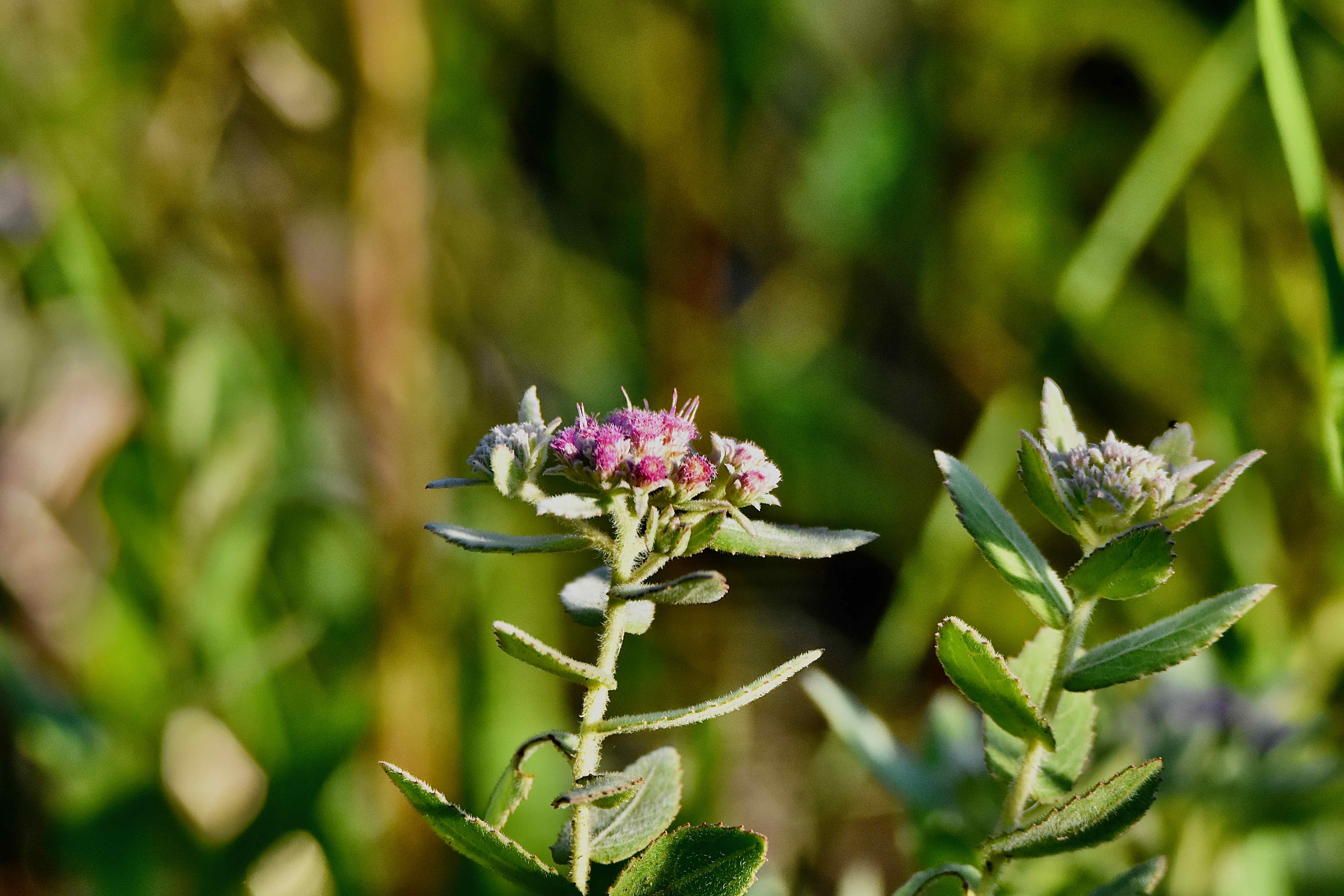
Sweetscent, photographed at Delaware Scrub Natural Area, Jupiter, Palm Beach County, in March 2014.
Sweetscent, Pluchea odorata, gets its name not so much because of its pleasant fragrance but rather because it smells less unpleasant than its cousins. It is a member of a tribe of plants known as stinkworts, so the bar isn't exactly high.
And its flowers aren't exactly renowned for their beauty.
But it might offer something far more valuable that neither nose or eye can detect: chemicals that might defeat certain cancers. Emphasis on the word, might. More on that in a bit. First the botanical basics: Sweetscent is a Florida native commonly found in wet places, particularly fresh and saltwater marshes. Its range includes the entire Peninsula and most of the Panhandle. It's also native to most of the United States, including the southern tier, up the Pacific to Washington State and up the Atlantic as far north as Maine.
It's also present in scattered fashion around the Great Lakes, on both sides of border because of an accidental release into the wild, according to the U.S. Geological Survey. Pennsylvania, where the extent of its range is one county northeast of Pittsburgh, lists sweetscent as endangered. Also within its native range: the Caribbean, Central and South America.
Sweetscent itself can grow to about six feet tall, though the plants we've seen have been perhaps a third that. It is multi-branched, with simple leaves arranged alternately on the stem. The leaves are two to six inches long, elliptical in shape, somewhat curled and slightly toothed along the edges. It is an annual or short-lived perennial. Sweetscent blooms year round in South Florida, peaking in the summer and fall. North of here, the season is August through October. The flowers themselves are small, rayless, in various shades of pinks and whites. They can appear in relatively large and dense clusters. But even then, their looks hardly inspire one to poetry. They're just . . . ok.
They do attract their share of pollinators, bees and butterflies, including the Florida duskywing, the hammock skipper and long-tailed skipper. And for that reason some people do include sweetscent as an element in their butterfly gardens despite some problems that it presents. It needs to be kept wet; it has little tolerance for drought. It can also be weedy. In fact, the National Park Service lists sweetscent among aquatic invasive plants.
In parts of the Pacific, including French Polynesia, sweetscent is considered as an invasive and noxious weed. It grows in pastures and displaces plants livestock would use for forage. It's considered a noxious weed in Hawaii.
Sweetscent has been used medicinally in different places where it's found. In Central America, for example. In Africa and India, the leaves are used to make a tea to heal wounds and reduce inflamation. A study done at the University of Vienna found that a group of chemicals that sweetscent produces called eudesmanes both killed cancer cells and prevented their spread. Much more research needs to done, however.
Other common names for sweetscent include saltmarsh fleabane, marsh fleabane, shrubby camphorweed, sweet-scented camporweed, cattle tongue, camphor weed, sourbush and last but not least, stink weed and stinking fleabane. It is a member Asteraceace, the family of sunflowers and daisies.


